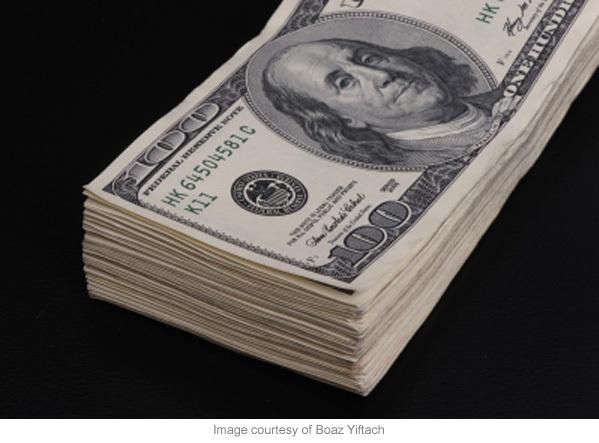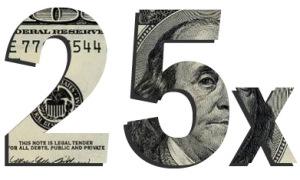
Editors Note: This article has been updated from the original version which first appeared on EverywhereOnce in November 2011.
With New Year’s celebrations now over it’s time for the hard work of resolution honoring to begin in earnest. Many of us will start the year resolving to spend less money and save more. If you’re like me and Shannon, the objective may be to accumulate enough to travel the world; or maybe you’re trying to build a college fund or pad a retirement nest egg. All worthy goals.
Unfortunately our good intentions are typically doomed to failure right from the start. By mid-year most of us will have fallen back into the same bad habits we resolve each year to end. We do that not because we lack the necessary willpower, but because we lack the correct perspective. To change our financial behavior we need to fundamentally change the way we think about money. We need to find a way to turn human nature, which constantly tempts us away from our long term goals, to our advantage. Fortunately that is easier to do than you may think.
Before we get to that, though, it’s worthwhile to reflect on the way people typically approach personal finance and why that approach so often leads to bad outcomes. Most of us think about our finances as a series of flows: income minus expenses. If income exceeds expenses we’re doing well. If they match we’re doing okay. If expenses are higher than income we’re in trouble, or soon will be. Intuitively this makes perfect sense and is true to an extent.
Everyone’s income eventually stops. Are you ready?
The problem with this approach is that it leads us toward a monthly payment mindset. We start believing that we’re doing fine as long as our monthly income is at least as large as our monthly expenses. If income rises, as it tends to over a working career, we tell ourselves that we can afford more and nicer things. We size large purchases, like houses and cars, so that our monthly payments roughly match our current cash flow.
What we rarely consider is that at some point income eventually stops. Expenses, meanwhile, continue until the day we die. If we’ve planned well, income stops because we’re able to retire voluntarily. If we’ve planned poorly, income stops because we become too old or sick to keep working. At that point the unaffordability of our “balanced” income minus expenses approach becomes painfully obvious.
Folks who thought they were doing well because they never spent beyond their means and because their checking account always balanced one day discover, often too late, that their lifestyle depended too heavily on a paycheck that was destined to end.
So what is the alternative?
If you were to consult a financial planner1 and ask “how much money do I need to retire?” they’d collect a ton of personal information, run a fancy Monte Carlo financial projection, print out pretty looking papers with lots of charts and numbers, charge you a generous fee, and then tell you something fairly similar to this: “You need to accumulate 25 times your uncovered annual expenses in savings.”2 By “uncovered expenses” they’d mean the amount by which your expenses exceed the income you expect to receive from pensions, social security and other continuing income streams.
25 times!
Let that sink in for a minute. For every dollar in spending we need to accumulate twenty five dollars in retirement savings.

How? By altering the equation. No longer is a dollar of expenses equal to a dollar of income. Expenses carry far more weight; twenty-five times more to be exact. Instead of comparing monthly payments with monthly income, you start thinking about the giant lump sum of cash that is needed to sustain those payments in retirement. Everything looks more expensive, and less affordable, in this context.
At this point in the conversation, it is easy to despair. All of a sudden the financial situation for the average American, where savings is currently just 3.4% of income, looks mighty precarious. Accumulating a savings balance of 25 times annual expenses is a daunting task.
Expense control is an extremely powerful financial tool
The good news is that we each have tremendous control over our expenses. The better news is that our financial future is significantly leveraged to how much we spend.
If what we just said is true, that a dollar in annual spending requires $25 in retirement savings, it is equally true that our savings needs decline by $25 for every dollar in annual spending we eliminate. That relationship sets up powerful incentives to slash spending.
Cutting out the daily three dollar latte seems trivial from a monthly expense perspective. Why bother? Things look quite different once we realize that eliminating the latte reduces our savings requirement by $27,000. 3 That’s right, deep-sixing the frothy coffee reduces the amount we need to save for retirement by $27,000. How does Folgers taste now?
Infrequent purchases that need occasional replacement have a similar dynamic. A new iPad may seem like a one-time cost of $400. What we don’t often consider at the point of purchase is that new things eventually become ingrained in our standard of living. Luxuries transform themselves into necessities. Buying that first iPad often means committing to a replacement device every couple of years. By doing so we also increase the amount of savings needed for retirement by about $5,000; a hefty price tag almost never considered when evaluating the affordability of such “one-time” purchases.
Be happy, save money
Thinking about money this way yields important psychic rewards. For most people buying something activates pleasure centers in the brain. We like acquiring new things. It makes us happy, at least for a little while. Saving money, meanwhile, is painful. It requires sacrificing current pleasure for some murky future benefit. This kind of delayed gratification isn’t something the human mind is very good at accepting. For obvious reasons of survival, we’re designed to value eating an actual meal more highly than the promise of one tomorrow. This suits us well when things are in short supply but can lead to self destructive over-consumption in times of plenty. The “25 Times Principle” helps turn these primitive instincts to your advantage by dramatically increasing the cost of current consumption.

It also has the potential to change the way we see the entire material world. I already suspect that many of us will never look at a three dollar latte the same way again. The same holds true for big houses, fancy cars, designer wardrobes and anything else we’re told we should want. Instead of viewing these things as objects of desire, it’s now possible to see them for what they really are: albatrosses that make it impossible for us to ever stop working.
Realizing these benefits requires one simple change: we need to value financial independence. We need to value a future were we have a chance of saying goodbye to paid work. The good news is that even if we value that future 1/25th as much as we value today’s purchase, putting that item back on the shelf is still an even money trade. And that’s a trade we can feel good about all day long.
—————————–
Footnotes:
1 The information contained on this website and from any communication related to this website is for information purposes only. Neither Brian nor Shannon are registered financial advisors and do not hold themselves out as providing any legal, financial or other advice. We do not represent that any financial suggestion made here or elsewhere is suitable for you. Please consult your own financial advisor.
2 The “25 times” rule of thumb, alternatively known as the 4% safe withdrawal rate, was first quantified in research called the Trinity Study. The basic concept is that a portfolio of stocks and bonds has historically supported an inflation adjusted annual portfolio withdrawal of 4% for periods as long as 30 years with relatively high levels of success. Subsequent research has added to and refined this initial study. As always, past performance does not guarantee future results.
3 $3 * 365 * 25 = $27,375
4 Image of shopping girl courtesy of Photostock

